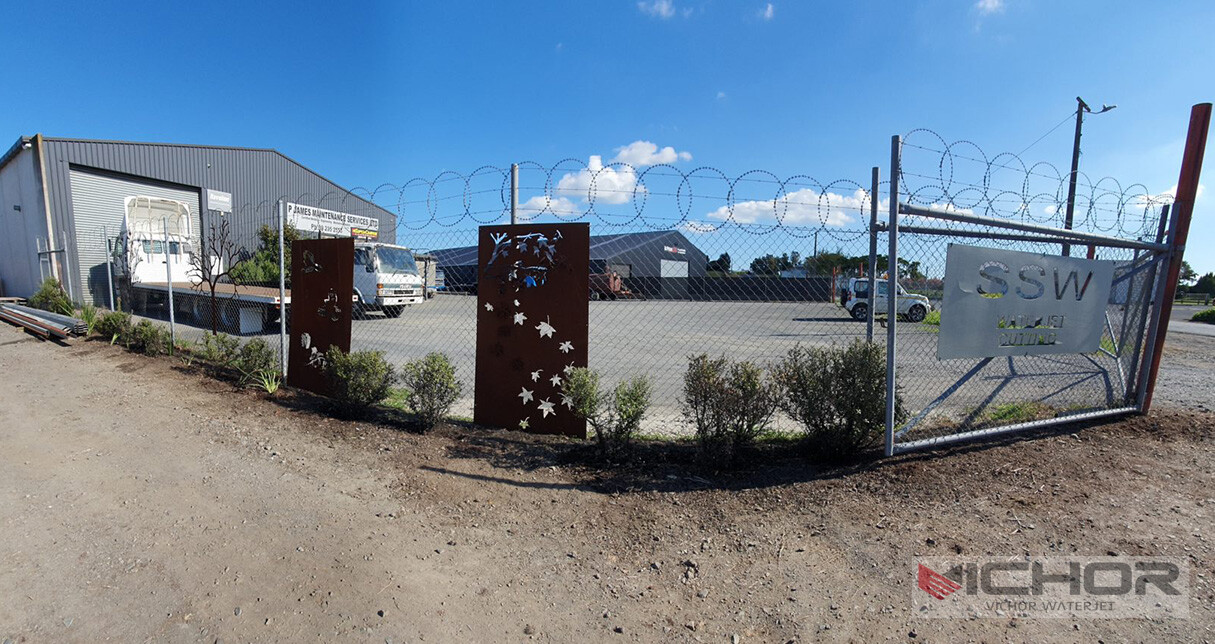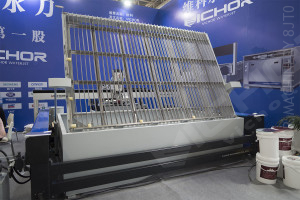
5 Critical Factors When Choosing Waterjet Cutting Machine Manufacturers for Bakers
The baking industry thrives on precision, hygiene, and efficiency. From crafting intricate cookie shapes to fabricating durable, food-grade stainless steel equipment, the tools used must meet exacting standards. Enter waterjet cutting technology – a cold-cutting process using ultra-high-pressure water (often mixed with abrasives for harder materials) to cut virtually anything with exceptional accuracy and no heat-affected zones. For bakeries and bakery equipment fabricators, partnering with the right waterjet cutting machine manufacturers for bakers is paramount. This guide explores the five essential considerations to ensure you select a manufacturer that truly understands and caters to the unique demands of the baking sector.
1. Expertise in Food-Grade Materials & Sanitary Design
Not all cutting is created equal, especially when it comes to food contact surfaces. The best waterjet cutting machine manufacturers for bakers possess deep expertise in working with materials critical to the industry:
Stainless Steel Mastery: Cutting food-grade stainless steel (304, 316L) for mixers, dough dividers, conveyors, baking sheets, racks, and structural components requires precision to avoid warping and ensure smooth, crevice-free edges that resist bacterial harborage. Manufacturers must understand optimal cutting parameters (pressure, speed, abrasive type/flow) for these alloys.
Plastics & Composites: Cutting food-safe plastics (HDPE, UHMW, Polycarbonate), cutting boards, gaskets, and insulation panels demands clean edges without melting or delamination.
Understanding Sanitary Standards: Manufacturers should be well-versed in design principles like EHEDG (European Hygienic Engineering & Design Group) or 3-A Sanitary Standards. This includes knowledge of:
Edge Quality: Achieving Ra (roughness average) finishes suitable for cleaning and preventing microbial attachment. Waterjet inherently produces a matte finish, but parameters can be tuned.
Minimizing Crevices: Precise cutting ensures tight fit-ups in welded assemblies, eliminating gaps where contaminants can collect.
Radius Requirements: Understanding the need for specific internal radii on corners for cleanability.
Material Certification: Ability to handle and track certified materials, providing necessary documentation for traceability.
2. Precision & Intricacy Capabilities for Bakery Applications
Bakery equipment and components often feature complex geometries, fine details, and tight tolerances:
Intricate Dough Cutting Dies: Waterjet excels at cutting intricate patterns and shapes into food-grade plastics or metals for dough cutting dies used in cookies, pastries, and crackers. Look for manufacturers with high-precision machines capable of holding tolerances of ±0.003″ to ±0.005″ (±0.075mm to ±0.127mm) or better.
Custom Baking Molds & Forms: Creating unique shapes for breads, cakes, or chocolates requires flawless contour cutting.
Equipment Components: Precision cutting of gears, brackets, chutes, and guides with complex profiles is essential for reliable bakery machinery operation. Nesting efficiency (arranging parts on material sheets to minimize waste) is also crucial for cost-effectiveness.
Prototyping & Low-Volume Production: Waterjet is ideal for quickly and cost-effectively producing prototypes or small batches of custom bakery equipment parts without expensive tooling. Manufacturers should offer CAD/CAM expertise (e.g., proficiency with DXF, DWG, STEP files) and design-for-manufacturability advice.
3. Dedicated Focus on Cleanliness & Contamination Control
Contamination is a baker’s nightmare. Waterjet cutting machine manufacturers for bakers must implement rigorous protocols:
Dedicated Food-Grade Cutting: Ideally, machines used for cutting food-contact materials should be segregated from those cutting industrial parts (like granite or titanium) to prevent cross-contamination via abrasive residue or tank water. Ask about their segregation practices.
Abrasive Selection: Using garnet abrasive is standard, but manufacturers should guarantee its purity and suitability for food-grade applications. Some may offer specialized, food-safe abrasive options. Procedures for preventing abrasive carryover onto food-contact surfaces are critical.
Tank & Water Management: Clean water sources and regular maintenance/cleaning protocols for the machine’s tank and components are essential. Water treatment systems prevent bacterial growth within the machine itself.
Handling & Packaging: Post-cutting, parts must be handled with clean gloves/packaging to prevent fingerprints, oils, or debris from contaminating surfaces destined for food contact. Parts should be thoroughly cleaned (often requiring a secondary wash/passivation process by the customer or a specialized processor) before final assembly or use.
4. Scalability, Machine Options & Customization
Bakeries range from artisan shops to large industrial plants. Manufacturers should offer solutions that scale:
Machine Bed Size & Power: Options should range from smaller tables suitable for prototype work or small component cutting to large-format machines capable of cutting full sheets of stainless steel (e.g., 4′ x 8′, 5′ x 10′, or larger) for oven linings or large equipment panels.

Pure Waterjet vs. Abrasive Waterjet: Can they provide both? Pure waterjet (water only) is perfect for softer materials like dough-cutting foam, rubber, gaskets, or food products themselves (though less common commercially for food), while abrasive waterjet handles metals and hard composites.
Automation Integration: For high-volume production, look for manufacturers offering or integrating automation like material loading/unloading systems (cranes, gantries) and advanced nesting software.
Custom Machine Builds: Can they engineer solutions for unique challenges, like cutting very thick materials (e.g., dense bread slicer blades) or integrating specific safety or handling features needed in a bakery equipment factory?
Technical Support & Training: Do they offer comprehensive training on machine operation and maintenance specific to the baker’s needs? Is robust technical support readily available?
5. Industry Experience, References & Value-Added Services
Proven experience in the food and bakery sector is invaluable:
Portfolio & Case Studies: Reputable waterjet cutting machine manufacturers for bakers will showcase relevant projects – cutting dough dies, fabricating stainless mixers, creating custom baking sheet components. Ask for specific bakery or food equipment examples.
Customer References: Request references from other bakery equipment manufacturers or large-scale bakeries they serve. Speak directly to them about their experience regarding quality, reliability, cleanliness, and service.
Understanding Bakery Workflows: The best partners understand how the parts they cut will be used – whether it’s a component for a high-speed production line or a custom decorative element. This informs their approach to tolerances, edge quality, and handling.
Value-Added Services: Look for manufacturers offering services beyond basic cutting:
Design Consultation: Helping optimize part designs for waterjet manufacturability and cost.
Secondary Processing: Deburring, edge finishing (e.g., light grinding/polishing to meet specific Ra requirements), forming, welding assistance, or assembly.
Material Sourcing: Assisting in procuring certified food-grade materials.
Compliance Documentation: Providing material certifications and process documentation needed for food safety audits.
Beyond the Machine: Partnering for Success
Choosing among waterjet cutting machine manufacturers for bakers isn’t just about buying a piece of equipment; it’s about selecting a strategic partner. The right manufacturer becomes an extension of your engineering and production team, contributing expertise in precision fabrication, food safety, and efficient manufacturing processes specific to the baking industry’s demands.
Key Questions to Ask Potential Manufacturers:
“Can you show me examples of bakery equipment components or food-grade parts you’ve cut?” (Look for stainless steel, food-safe plastics, dough die examples).
“What specific measures do you take to prevent contamination when cutting food-contact materials?” (Ask about machine segregation, abrasive handling, cleaning protocols, part handling).
“What tolerances can you consistently hold on materials like 16ga and 1/4″ stainless steel?” (Verify precision capabilities).
“Are you familiar with EHEDG or 3-A sanitary design principles, and how does your process support them?” (Gauge their hygiene knowledge).
“What size machines do you offer, and can you handle the volume of parts we anticipate?” (Assess scalability).
“What kind of technical support and training do you provide?” (Ensure long-term operational success).
“Can you provide references from other bakery equipment manufacturers or large bakeries?” (Seek validation).
Investing in waterjet cutting technology, either by purchasing a machine or outsourcing to a specialist fabricator, offers bakeries and bakery equipment manufacturers unparalleled versatility, precision, and efficiency. However, realizing the full potential of this technology hinges critically on partnering with the right waterjet cutting machine manufacturers for bakers. By prioritizing expertise in food-grade materials and sanitary design, demanding high precision for intricate applications, insisting on rigorous contamination control protocols, selecting scalable and customizable solutions, and verifying industry-specific experience and references, bakers can secure a partnership that delivers not just cut parts, but reliable, safe, and innovative solutions that drive success in the competitive baking industry. This strategic investment translates directly into higher quality equipment, greater production flexibility, enhanced food safety, and ultimately, a stronger bottom line.
continue reading



